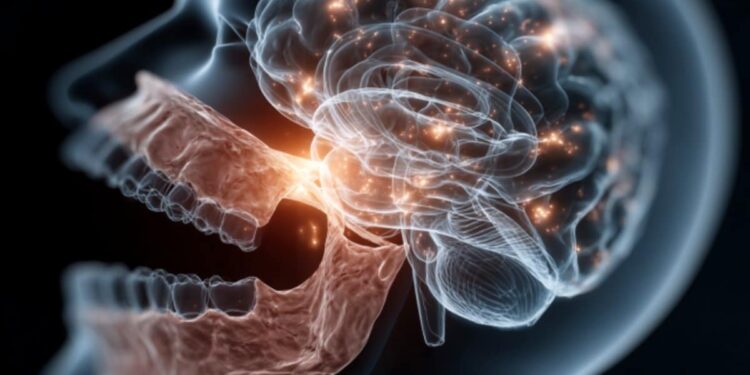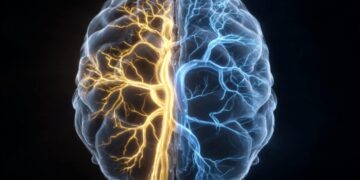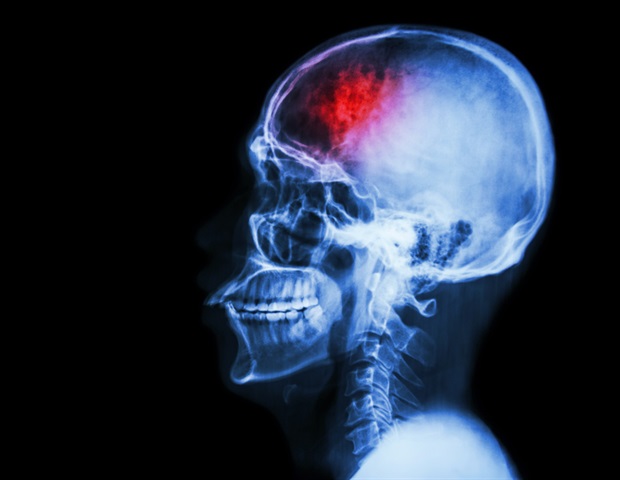Summary: A new study finds that older adults with gum disease are more likely to show signs of damage to the brain’s white matter, a change linked to decreased memory, balance problems and an increased risk of stroke. MRI scans revealed that participants with gum disease had significantly more white matter hyperintensities than those without gum disease, even after taking into account age and other health factors.
The researchers emphasize that while the study does not prove causality, it highlights a potential link between oral inflammation and brain health. The findings suggest that maintaining good dental hygiene may also help protect the brain as we age.
Key facts:
White matter damage: Adults with gum disease had more white matter hyperintensities, signs of nerve fiber damage in the brain. 56% higher odds: Participants with gum disease were 56% more likely to show severe white matter changes than those without. Brain-mouth connection: Findings suggest that oral inflammation may contribute to brain small vessel disease and cognitive decline.
Source: AAN
Adults with gum disease may be more likely to have signs of damage to the white matter of the brain, called white matter hyperintensities, than people without gum disease, according to a new study published October 22, 2025 in Neurology Open Access.
White matter refers to the nerve fibers that help different parts of the brain communicate. Damage to this tissue can affect memory, thinking, balance and coordination and has been linked to an increased risk of stroke.
White matter hyperintensities are bright spots that appear on brain scans and are thought to reflect damaged white matter tissue. While the study found an association, it does not prove that gum disease causes white matter damage.
“This study shows a link between gum disease and white matter hyperintensities, suggesting that oral health may play a role in brain health that we are only beginning to understand,” said study author Souvik Sen, MD, MS, MPH, of the University of South Carolina at Columbia.
“While more research is needed to understand this relationship, these findings add to growing evidence that keeping your mouth healthy can promote a healthier brain.”
The study included 1,143 adults with an average age of 77 years. Each person underwent a dental examination to detect gum disease. Of the participants, 800 had gum disease and 343 did not.
Participants underwent brain scans to look for signs of cerebral small vessel disease, which is damage to the small blood vessels in the brain that can appear as white matter hyperintensities, cerebral microbleeds, or lacunar infarcts.
These brain changes become more common with age and are associated with an increased risk of stroke, memory problems, and mobility problems.
People with gum disease had more white matter hyperintensities, with an average volume of 2.83% of total brain volume compared to 2.52% in people without gum disease.
The researchers divided people into four groups based on the volume of white matter hyperintensity. Those in the tallest group had a volume of more than 21.36 cubic centimeters (cm³), while those in the shortest group had a volume of less than 6.41 cm³.
Of people with gum disease, 28% were in the highest group compared to 19% of people without gum disease.
After adjusting for factors such as age, sex, race, high blood pressure, diabetes, and smoking, people with gum disease were 56% more likely to fall into the highest group of white matter hyperintensities than people without gum disease.
However, no links were found between gum disease and two other brain changes linked to small vessel disease: brain microbleeds and lacunar infarcts.
“Gum disease is preventable and treatable,” the senator said.
“If future studies confirm this link, it could offer a new avenue to reduce brain small vessel disease by addressing oral inflammation. For now, it underscores how dental care can support long-term brain health.”
One limitation of the study is that brain imaging and dental evaluations were performed only once, making it difficult to assess changes over time.
Key questions answered:
A: Researchers found that people with gum disease had significantly more white matter hyperintensities (small areas of brain damage linked to aging, stroke, and memory loss), suggesting that oral inflammation may influence brain health.
A: White matter hyperintensities are bright spots on MRI scans that indicate damaged nerve fibers. They are associated with cognitive impairment, balance problems, and increased risk of stroke.
A: While this study only shows an association, not causation, experts say that maintaining oral health can reduce systemic inflammation and potentially support better brain function over time.
About this neurology research news
Author: Natalie Conrad
Source: AAN
Contact: Natalie Conrad – AAN
Image: Image is credited to Neuroscience News.
Original research: Open access.
“Periodontal disease independently associated with white matter hyperintensity volume: a measure of cerebral small vessel disease” by Souvik Sen et al. Neurology: open access
Abstract
Periodontal disease independently associated with white matter hyperintensity volume: a measure of cerebral small vessel disease
Background and objectives
White matter hyperintensities (WMH), cerebral microbleeds (CMB), and lacunar infarcts are radiographic markers of cerebral small vessel disease (CSVD), which is associated with an increased risk of stroke and cognitive impairment. Periodontal disease (PD), a chronic inflammatory condition, has been linked to vascular pathology and may contribute to CVD. The aim of this study was to evaluate the independent association between PD and MRI-verified CSVD features using data from the Atherosclerosis Risk in Communities (ARIC) cohort.
Methods
Periodontal status was classified as PD (n = 800) or periodontal health ((PH); n = 343). CSVD features included WMH volume (WMHV), CMB, and lacunar infarcts. WMHV was derived from fluid-attenuated inversion recovery images and classified into quartiles. Multinomial logistic regression was used to assess associations between quartiles of PE and WMHV, and binomial logistic regression assessed associations between PE and the presence of CMB and lacunar infarcts. Models were adjusted for demographic and vascular risk factors, including age, sex, racial center, hypertension, diabetes, smoking, and time between visits.
Results
We analyzed 1,143 ARIC participants (mean age 77 years; 45% male; 76% white, 24% African American) who underwent periodontal evaluation at visit 4 and brain MRI at visit 5. Participants with PD had significantly higher WMHV compared to those with HP (median WMH%: 2.83 vs. 2.52; p = 0.012). PD was associated with the highest quartile of WMHV (Q4 >21.36 cm3), with a crude odds ratio (OR) of 1.77 (95% CI: 1.23–2.56) and an adjusted OR of 1.56 (95% CI: 1.01–2.40). A weak but significant correlation was found between WMHV and the World Workshop Periodontal Profile Class (ρ = 0.076, p = 0.011). No statistically significant adjusted associations were found between PE and CMBs (adjusted OR 1.16, 95% CI 0.83–1.63) or lacunar infarcts (adjusted OR 1.14, 95% CI 0.77–1.69).
Discussion
PD was independently associated with increased WMH burden, a key imaging marker of CSVD, but not with CMB or lacunar infarcts after adjustment for confounders. This suggests that PD may contribute to CSVD pathology, particularly WMHs, through mechanisms involving systemic inflammation. Limitations include the temporal gap between dental and imaging evaluations and potential residual confounding. Interventions targeting PD could be explored as a modifiable risk factor for CVD prevention.


_6e98296023b34dfabc133638c1ef5d32-620x480.jpg)

















